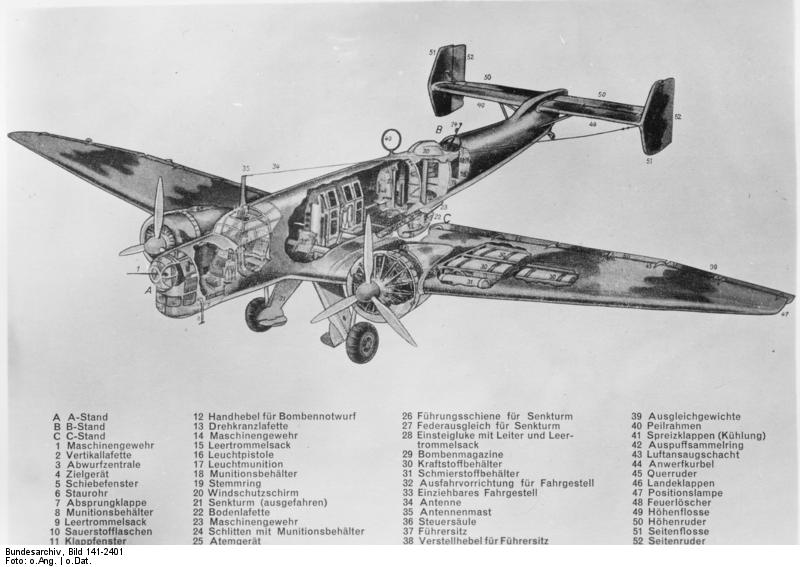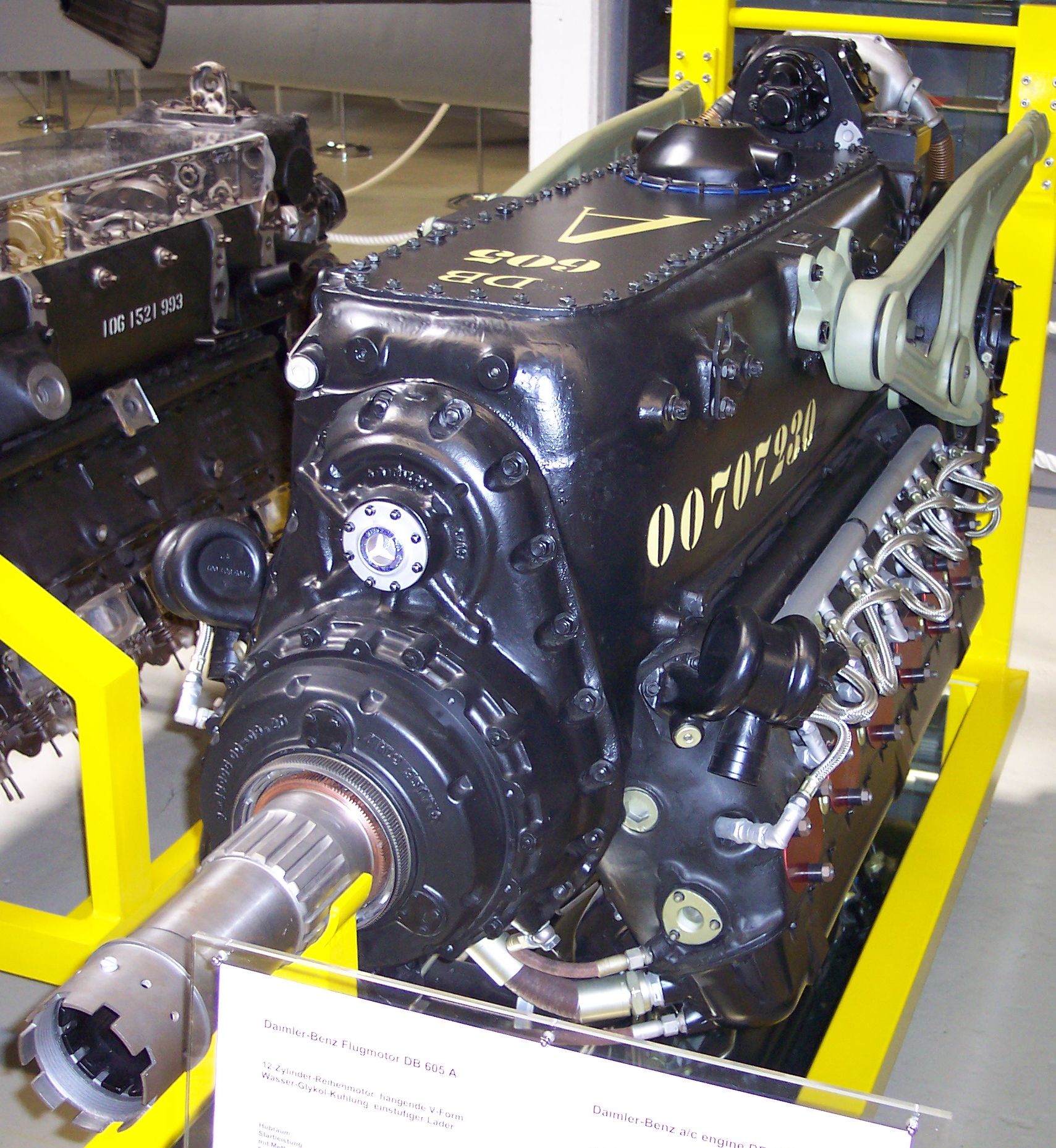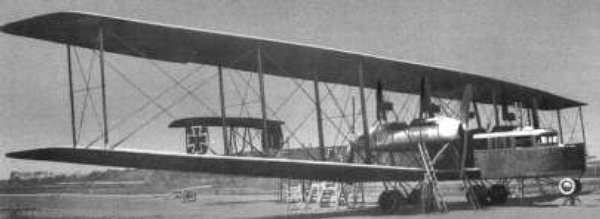|
Henschel Hs 130
The Henschel Hs 130 was a German high-altitude reconnaissance and bomber aircraft developed in World War II. It suffered from various mechanical faults and was never used operationally, only existing as prototype airframes. Development Development of the Hs 130 began with two Hs 128 prototypes, which first flew on 11 April 1939, with the second prototype flying on 20 February 1940.Dressel and Greil 1994, p.166. Both prototypes were research aircraft, used for testing pressurized cabins, engine superchargers, and cantilever wings. Different engines powered the two prototypes; the V1 by Daimler-Benz DB 601s and the V2 by Junkers Jumo 210s. Both had fixed landing gear.Donald 1999, p.147. While trials of the two prototypes were not successful, the potential of a high altitude aircraft caught the attention of Theodor Rowehl, commander of the ''Luftwaffe''s special reconnaissance unit. Rowehl's interest in the Hs 128's potential for high-altitude reconnaissance missions led Reich ... [...More Info...] [...Related Items...] OR: [Wikipedia] [Google] [Baidu] |
Altitude
Altitude or height (also sometimes known as depth) is a distance measurement, usually in the vertical or "up" direction, between a reference datum and a point or object. The exact definition and reference datum varies according to the context (e.g., aviation, geometry, geographical survey, sport, or atmospheric pressure). Although the term ''altitude'' is commonly used to mean the height above sea level of a location, in geography the term elevation is often preferred for this usage. Vertical distance measurements in the "down" direction are commonly referred to as depth. In aviation In aviation, the term altitude can have several meanings, and is always qualified by explicitly adding a modifier (e.g. "true altitude"), or implicitly through the context of the communication. Parties exchanging altitude information must be clear which definition is being used. Aviation altitude is measured using either mean sea level (MSL) or local ground level (above ground leve ... [...More Info...] [...Related Items...] OR: [Wikipedia] [Google] [Baidu] |
Hirth
Hirth Engines GmbH is an engine manufacturer based in Benningen, Germany. It is currently a part of the UMS Aero Group. Hirth began manufacturing aero engines in the 1920s, was taken over by Heinkel in WWII to develop the Heinkel-Hirth jet engines, and today specialises in small two-stroke engines for light aircraft and other applications. History Hellmuth Hirth and Hirth Motoren The company was founded by Hellmuth Hirth as Versuchsbau Hellmuth Hirth. The first commercial engine, the 4-cylinder inverted in-line HM 60, first ran in June 1923 and was sold from the next year. Its quality was extremely high and it formed the foundation of the business.Gunston, Bill (1998). ''World Encyclopaedia of Aero Engines'', 4th Edition. Patrick Stephens Ltd (PSL). The company was renamed Leichtmetall-Werke GmbH, Elektronmetall GmbH and eventually separated from the aero engine manufacturing to form Mahle GmbH as a manufacturer of light alloy engine components, specifically the magnesium all ... [...More Info...] [...Related Items...] OR: [Wikipedia] [Google] [Baidu] |
North American XB-28 Dragon
The North American XB-28 Dragon (NA-63) was an aircraft proposed by North American Aviation to fill a strong need in the United States Army Air Corps for a high-altitude medium bomber. It never entered production, with only two prototypes being built. Design and development The order for a high-altitude medium bomber was put out on 13 February 1940; the XB-28 first flew on 26 April 1942. The XB-28 was based on North American Aviation's highly successful B-25 Mitchell, but as it evolved it became a completely new design, much more reminiscent of the Martin B-26 Marauder. The overall configuration of the B-25 and XB-28 were fairly similar; the most important distinction was that the twin tail of the B-25 was changed to a single tail on the XB-28. It was among the first combat aircraft with a pressurized cabin. The XB-28 proved an excellent design, with significantly better performance than that of the B-25, but it was never put into production. High-altitude bombing was hampered ... [...More Info...] [...Related Items...] OR: [Wikipedia] [Google] [Baidu] |
Messerschmitt Me 261
The Messerschmitt Me 261 ''Adolfine'' was a long-range reconnaissance aircraft designed in the late 1930s. It looked like an enlarged version of the Messerschmitt Bf 110. It was not put into production; just three Me 261s were built and used primarily for testing and development purposes. Design and development In 1937, Messerschmitt began ''Projekt'' P. 1064, a study for a long-range reconnaissance aircraft, and took the design of the Bf 110 twin-engine heavy fighter (and derivative Bf 161 reconnaissance / Bf 162 light bomber projects) as its basis. The P. 1064 had a long, slim fuselage with two wing-mounted engines. The aircraft was planned from the outset as a record-breaking aircraft, but after becoming convinced that the aircraft was capable of taking the world long-distance flight record, the German Air Ministry (''Reichsluftfahrtministerium'') approved the project and gave it the airframe designation number of 8-261.Green 1970, p. 617. The intended goal of the projec ... [...More Info...] [...Related Items...] OR: [Wikipedia] [Google] [Baidu] |
Junkers Ju 388
The Junkers Ju 388 '' Störtebeker'' is a World War II German ''Luftwaffe'' multi-role aircraft based on the Ju 88 airframe by way of the Ju 188. It differed from its predecessors in being intended for high altitude operation, with design features such as a pressurized cockpit for its crew. The Ju 388 was introduced very late in the war, and production problems along with the deteriorating war conditions meant that few were built. Background The ''Reichsluftfahrtministerium'' (RLM), the Reich Aviation Ministry, first learned of the American Boeing B-29 Superfortress heavy bomber in late 1942. Serious concerns as to B-29 capability developed in early 1944, when YB-29 "Hobo Queen" made a well-publicised appearance at RAF Bovingdon, which had been cryptically hinted-at in an American-published ''Sternenbanner'' German language propaganda leaflet from Leap Year Day in 1944, meant to be circulated within the Reich. The performance estimates of this aircraft were a cause for great u ... [...More Info...] [...Related Items...] OR: [Wikipedia] [Google] [Baidu] |
Junkers Ju 86
The Junkers Ju 86 was a German monoplane bomber and civilian airliner designed in the early 1930s, and employed by various air forces on both sides during World War II. The civilian model Ju 86B could carry ten passengers. Two were delivered to Swissair and five to Deutsche Luft Hansa. In addition a single civilian Ju 86Z was delivered to Sweden's AB Aerotransport. Design and development In 1934, a specification for a modern twin-engined aircraft, capable of operating both as a high-speed airliner for the German airline Luft Hansa and as a medium bomber for the nascent Luftwaffe, was issued to both Junkers and Heinkel. Five prototypes were ordered from each company; the Junkers Ju 86 and Heinkel He 111.Green and Swanborough 1982, p. 15. Junkers' design was a low-winged twin-engined monoplane, of all-metal stressed skin construction. Unlike most of Junkers' previous designs, it discarded the typical corrugated skinning in favour of smooth metal skinning which helped to red ... [...More Info...] [...Related Items...] OR: [Wikipedia] [Google] [Baidu] |
Daimler-Benz DB 605T
The Daimler-Benz DB 605 is a German aircraft engine built during World War II. Developed from the DB 601, the DB 605 was used from 1942 to 1945 in the Messerschmitt Bf 109 fighter, and the Bf 110 and Me 210C heavy fighters. The DB 610, a pair of DB 605s geared to turn a single output shaft that replaced the similar DB 606, was used in the A-3 and all A-5 variants of Germany's only operational heavy bomber, the Heinkel He 177A. License-built versions of the DB 605 were used in the Macchi C.205, Fiat G.55, Reggiane 2005 and some other Italian aircraft. It was also used in the Swedish SAAB B 18B and initially in the pusher-design SAAB J 21. Approximately 42,400 DB 605s of all kinds were built. Design and development The primary differences between the 605 and 601 were greater displacement, higher revolutions, higher compression ratio and a more powerful supercharger. Engineers determined that the cylinders could be bored out to a larger diameter without seriously affecting th ... [...More Info...] [...Related Items...] OR: [Wikipedia] [Google] [Baidu] |
Daimler-Benz DB 603B
The Daimler-Benz DB 603 was a German aircraft engine used during World War II. It was a liquid-cooled 12-cylinder inverted V12 enlargement of the DB 601, which was in itself a development of the DB 600. Production of the DB 603 commenced in May 1942, and with a 44.5 liter (44,500 cc) displacement figure, was the largest displacement inverted V12 aviation engine to be produced and used in front line aircraft of the Third Reich during World War II. The DB 603 powered several aircraft, including the Do 217 N&M, Do 335, He 219, Me 410, BV 155 and Ta 152C. Design and development The Mercedes-Benz T80 land speed record car, designed by aircraft engineer Josef Mickl with assistance from Ferdinand Porsche and top German Grand Prix racing driver Hans Stuck, incorporated the third prototype DB 603. It was set up for the land speed record run attempt to operate on an exotic fuel mix based on a 63% methanol, 16% benzene and 12% ethanol content, with minor percentages of acetone, ... [...More Info...] [...Related Items...] OR: [Wikipedia] [Google] [Baidu] |
Mercedes D
Mercedes may refer to: People * Mercedes (name), a Spanish feminine name, including a list of people and fictional characters with the given name or last name Automobile-related * Mercedes (marque), the pre-1926 brand name of German automobile models and engines built by Daimler Motors company * Mercedes-Benz, the post-1926 German brand of automobiles, engines, and trucks now owned by the Mercedes-Benz Group * Mercedes-AMG, a subsidiary of Daimler AG that builds customized and high performance Mercedes-branded automobiles * Mercedes-Benz in Formula One, the Mercedes Formula One racing team, currently known as Mercedes-AMG Petronas Motorsport * Mercedes-Benz in motorsport, its activities in sportscar racing, rallying, Formula Three, DTM, V8 Supercars Australia and Formula One * American Mercedes (1904 automobile), a company licensed to build Mercedes automobiles in America Places * Mercedes, Buenos Aires Province, Argentina ** Mercedes Partido, Argentina * Mercedes, Corriente ... [...More Info...] [...Related Items...] OR: [Wikipedia] [Google] [Baidu] |
Zeppelin-Staaken R
Zeppelin-Staaken (sometimes Zeppelin Werke Staaken or Zeppelin-Werke GmbH), was a German aircraft manufacturer originally located in Gotha. The company built the largest aircraft of World War I, the "Riesenflugzeug" (giant aircraft).Mondey, 1978. p 309. Aircraft built *Zeppelin-Staaken Riesenflugzeuge ** Zeppelin-Staaken R.IV **Zeppelin-Staaken R.V **Zeppelin-Staaken R.VI ** Zeppelin-Staaken R.VII **Zeppelin-Staaken 8301 ** Zeppelin-Staaken R.XIV **Zeppelin-Staaken R.XV **Zeppelin-Staaken R.XVI **Zeppelin-Staaken E-4/20 See also *Riesenflugzeug A ''Riesenflugzeug'' (plural ''Riesenflugzeuge'', German for "giant aircraft"), sometimes colloquially referred to in English as an R-plane, was any member of a class of large World War I German bombers, possessing at least three aircraft engines ... References Citations Bibliography * External links Zeppelin-Staaken R.III German Military Aviation Service {{Idflieg R-class designations ... [...More Info...] [...Related Items...] OR: [Wikipedia] [Google] [Baidu] |
Daimler-Benz DB 603
The Daimler-Benz DB 603 was a German aircraft engine used during World War II. It was a liquid-cooled 12-cylinder inverted V12 enlargement of the DB 601, which was in itself a development of the DB 600. Production of the DB 603 commenced in May 1942, and with a 44.5 liter (44,500 cc) displacement figure, was the largest displacement inverted V12 aviation engine to be produced and used in front line aircraft of the Third Reich during World War II. The DB 603 powered several aircraft, including the Do 217 N&M, Do 335, He 219, Me 410, BV 155 and Ta 152C. Design and development The Mercedes-Benz T80 land speed record car, designed by aircraft engineer Josef Mickl with assistance from Ferdinand Porsche and top German Grand Prix racing driver Hans Stuck, incorporated the third prototype DB 603. It was set up for the land speed record run attempt to operate on an exotic fuel mix based on a 63% methanol, 16% benzene and 12% ethanol content, with minor percentages of aceton ... [...More Info...] [...Related Items...] OR: [Wikipedia] [Google] [Baidu] |
BMW 801
The BMW 801 was a powerful German air-cooled 14-cylinder-radial aircraft engine built by BMW and used in a number of German Luftwaffe aircraft of World War II. Production versions of the twin-row engine generated between 1,560 and 2,000 PS (1,540–1,970 hp, or 1,150–1,470 kW). It was the most produced radial engine of Germany in World War II with more than 61,000 built. The 801 was originally intended to replace existing radial types in German transport and utility aircraft. At the time, it was widely agreed among European designers that an inline engine was a requirement for high performance designs due to its smaller frontal area and resulting lower drag. Kurt Tank successfully fitted a BMW 801 to a new fighter design he was working on, and as a result the 801 became best known as the power plant for the famous Focke-Wulf Fw 190. The BMW 801 radial also pioneered the use of what would today be designated an engine control unit: its ''Kommandogerät'' engine manag ... [...More Info...] [...Related Items...] OR: [Wikipedia] [Google] [Baidu] |







